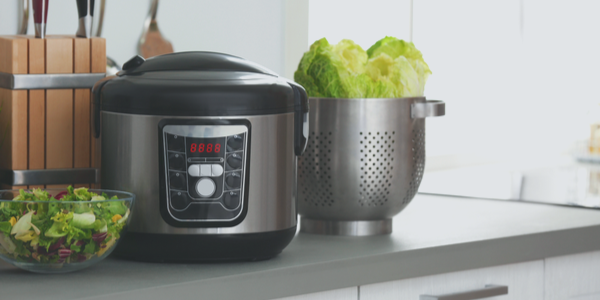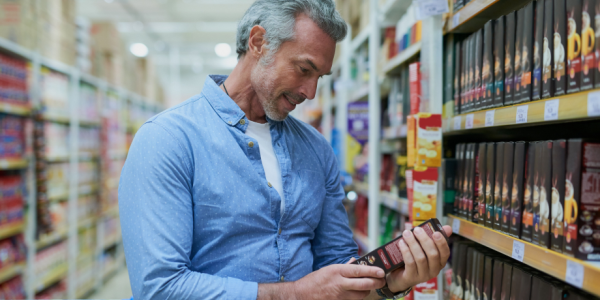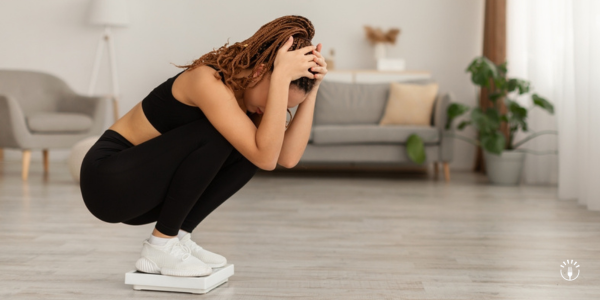
The slow cooker is a fast favorite, especially when used correctly and efficiently. But if new to slow cookers, slow cooker temperatures, crockpot low temp recipes, and how to cook food safely might seem like foreign concepts.
Fortunately, slow cooker use does not have to be overly complicated! Find out the best tips and tricks for any beginner cook wondering, "How to use my slow cooker?"
Slow Cooker Basics
Mastering the slow cooker can make it a favorite among kitchen appliances. As its name implies, it is not the fastest. However, the functions enabling "set-it-and-forget-it" methods make it popular among amateur and sophisticated chefs alike.
How Slow Cooker Works
A slow cooker contains heating elements along the bottom and side. These portable kitchen devices plug into the wall and use that power source to generate heat. Using a slow heating method over several hours, slow cookers cook food until it is evenly done and ready to eat.
Slow cookers are heralded as the ideal kitchen appliance. For modern, busy families, slow cookers create large meals with minimal preparation. For many families, slow cookers make home-cooked meals more possible.
Slow Cooker Uses
Slow cookers are a way to accomplish "all-day cooking without looking". While one should be mindful and monitor the slow cooker, it makes meals that require minimal attention and preparation.
To create healthy and high protein crock-pot recipes, one only needs to follow a simple recipe though sophisticated meals like chicken cacciatore can also be prepared slow cooker-style. Most slow-cooked meals can be prepared in 20 to 30 minutes with marginal attention needed in the hours before it is ready.
When To Use a Slow Cooker
Slow cookers are perfect for convenient, inexpensive meals on busy days. People love using slow cookers because they:
• Operate economically compared to other kitchen appliances
• Provide portable electric cooking
• Tenderize less expensive, tougher cuts of meat (i.e. shoulder, round, chuck)
Common Questions About Slow Cooker Crock Pots
With slow cookers claiming to be multi-cookers with a variety of uses, it can quickly feel confusing. The following questions can help establish familiarity with a slow cooking device.
Are Slow Cookers And Crock Pots The Same?
All crockpots are slow cookers but not all slow cookers are crockpots. The main difference comes down to a brand name.
Crock-Pot® is a trademarked name from a specific company. It describes a specific brand of slow cooker from the company Sunbeam, a division of the Jarden Corporation. It was introduced in 1971 by its original trademarkers, Rival Manufacturing Company.
Today, most manufacturers use the term "slow cooker" to describe their similar products. Many appliance companies create their own type of slow cooker because of consumer demand for the versatile, popular product.
Will Slow Cookers Overcook Food?
Common mistakes can cause some parts of a slow cooker meal to come out overdone while other components remain undercooked.
To avoid common crockpot mistakes, nutrition experts recommend laying the ingredients. The elements used to heat a slow cooker are generally found on the sides and bottom of the appliance. It may seem intuitive to place the meat at the bottom of the pot. However, this can lead to overcooked protein.

Instead, layer the hearty, tough vegetables along the bottom and sides to ensure thorough cooking. Then, less-dense veggies can be placed on top. Finally, the meat or other protein is placed above the vegetables.
This method of layering also allows for juices and flavors from the protein to drip down and season the rest of the ingredients. The most delicate of vegetables are placed at the very top. Most recipes include some sort of liquid to prevent food from sticking to the sides.
To avoid overcooking fish, also know that it cooks differently than other meats. For fillets that are full of flavor, add raw, thawed fish to vegetables that have been slow cooking for several hours already.
Three or four fillets of fish can cook in under 20 minutes when put in with steaming vegetables and at least a ½ cup of liquid. It is harder to overcook fish in the slow cooker because the risk of overcooking is greater with higher-heat techniques.
Will Slow Cookers Burn Food?
Generally, there is a low risk of food burning when slow cookers are used correctly. Delicate fresh herbs, such as parsley and cilantro, can become too crunchy and lose their fresh taste.
Using delicate herbs as a garnish is recommended to lend a nice, fresh flavor to many slow cooker meals. Heartier herbs, like rosemary or thyme, can be added on top of slow cooker ingredients while maintaining favorable features.
Will Slow Cooker Kill Bacteria?
The danger zone is a range of temperatures that "bad" bacteria thrive in. Between the temperatures 40 and 140°F, bacteria can rapidly multiply.
Safe thawing and practices such as the following can create an environment where food remains safe.
What Size Slow Cooker Is Best?
The right slow cooker size for an individual or family is estimated at about ½ to 1 quart per person. The following guide can help estimate slow cooker capacity needs:
• Single: 1 ½ quart
• Couple: 2-3 ½ quart
• Small family (3-4 people): 3 ½ - 4 ½ quart
• Large family (5-7 people): 4 ½ -5 quart
• 8 or more people: 6-8 quart
Can Slow Cooker Pots Go In the Oven?
Whether or not the pot of a slow cooker is safe to put in the oven will depend on the specific brand. As a general rule, use the following tips to make a decision:
• Check the user manual for safety instructions
• Use the appropriate insert or accessory for transferring between different cooking methods/appliances
• Use a food thermometer at regular intervals to check the temperature of food
• Follow the recipe exactly to prevent damaging the slow cooker or increasing the risk of foodborne illness
Slow cookers, when used properly, can cook food entirely on their own. It is rare that a slow cooker pot would need the oven in order to complete the cooking process.
Can Slow Cooker Go In Dishwasher?
Many slow cookers require hand-washing with warm water and soap to maintain the integrity of the slow cooker appliance and accessories. Some companies have created dishwasher-safe products for ease of cleaning.
Consult the brand's user manual for a guide on proper cleaning procedures. Most modern companies make their user manuals available online.
How Long Can Food Keep Safely in a Slow Cooker?
The cooking time is typically expressed as a range of hours. For example, a recipe might call for four to six hours on the "low" setting or three to four hours on the “high” setting.
The amount of time needed to safely cook food depends on variables, such as:
• Thickness of meat
• Fullness of the slow cooker
• Temperature of the food
Can Slow Cookers Cook Rice?
Rice and pasta can be cooked in a slow cooker - and it is important to follow the recipe exactly.
Be sure to account for the water or liquid (i.e. pasta sauce) and extra ingredients cooking with the rice or pasta. The liquid ingredients are what allow for the pasta or rice to cook correctly.
How to Use a Slow Cooker
Consulting the user manual to consider specific safety precautions. Manuals also contain recipes and can help familiarize the user with that specific brand's device.
Since a slow cooker is often used for convenience, it can be tempting to set it up quickly and rush out the door. However, small but significant steps can be taken in order to set the slow cooker up safely:
1. Thaw frozen food, especially meats, properly beforehand.
2. Account for set-up and time for preparing food safely, including:
• Washing hands with warm water
• Rinsing fruits and vegetables thoroughly
• Cleaning kitchen surfaces and utensils
3. Periodically check the temperature of food. If there is a power outage, "When in doubt, throw it out." Food should not be lower than 165°F for two hours.
4. Once the food is done, do not let it cool for too long in the slow cooker. Food chills more easily in large, shallow containers. Putting a warm slow cooker in the fridge can compromise the safety of other foods.
5. Slow cookers are not designed for reheating. Meals should be served within two hours of being cooked by the slow cooker. Reheat leftovers using a microwave or stove.
With an understanding of basic safety tips, using a slow cooker can cut food preparation time in half. The detailed tips below can help any beginner slow cooker yield safe and delicious results.
Thaw Meat Safely
Defrosting protein, such as meat or poultry, correctly is important to ensure even cooking. Meat or fish fillets should be completely thawed before being placed in the slow cooker.
Cooking food from frozen can take 50 percent longer than when it is completely thawed or fresh. The USDA recommends three safe ways to thaw food:
• In the refrigerator
• In cold water
• In the microwave
Also, spending just eight extra minutes to brown ground meat before placing it in the slow cooker can decrease the risk of foodborne illness.
Start the Space Clean
The cooker, any utensils used, and all work surfaces involved should be clean. When preparing food in different stages or times, cleanse surfaces in between recipe steps. Washing hands can also help prevent the spread of bacteria and cross-contamination.
Limit Peeking!
Lifting the lid, even just one time, can easily add 20 or 30 minutes to the cooking process. When using a slow cooker, this can also cause the food to enter the danger zone.
Overall, the slow cooker lid should maintain a tight seal. It should only be removed to stir as directed by a recipe.
Refrigerate Perishables as Long as Possible
Perishable foods should stay in the fridge as long as possible, up until time for preparation. Keeping perishables out at room temperature increases the risk of bacteria multiplying.
Cook at and to the Right Temperature
Invest in a food thermometer to ensure food is thoroughly cooked. Temperatures can be key to cooking food properly.
For example, ground meat in the following dishes can usually be cooked on the "high" setting:
• Soups
• Stews
• Chili
• Casseroles
Poultry, on the other hand, can become dry and tough when cooked on "high". Even set to "low" temperature settings, chicken breasts can cook in only three or four hours.
Use the Right Slow Cooker Setting
The two most common heat settings are "low" and "high". Many appliances now have a "warm" or "keep warm" setting that helps to keep food at the proper temperature. This allows for the user to keep food that is done warm without overcooking it until it is ready to eat.
Some slow cookers come with timer features. Continue to keep an eye on the slow cooker as it cooks, but timers are useful to utilize for a more automated cooking process.
Do Not Overfill
Foods should not be overflowing out the sides. The slow cooker should be half to two-thirds full, at most. Overstuffing can lead to undesirable results.
Consider Slow Cooker Accessories and Inserts
Accessories and inserts can help expand cooking options. Special metal inserts can be used to begin cooking meat or start the cooking process.
The Bottom Line for Beginners
Using a slow cooker can make meals easier, especially on busy weekdays. However, it is important to prepare the food and slow cooker for proper cooking to ensure food safety.
Familiarizing oneself with this handy device can yield delicious results!
References:
Bretz C. Selecting and Using Slow Cookers. Walnut Creek Extension District. https://www.walnutcreek.k-state.edu/docs/slow%20cooking.pdf.
Driessen S. Slow cookers and food safety. University of Minnesota Extension. Published 2018. https://extension.umn.edu/preserving-and-preparing/slow-cookers#:~:text=Eat%20immediately%20or%20place%20leftovers,(140%20F%20or%20above)..
Ellis E. 10 Food Safety Tips for the Slow Cooker. Eat Right. Published January 8, 2021. https://www.eatright.org/homefoodsafety/four-steps/cook/10-food-safety-tips-for-the-slow-cooker.
The Big Thaw -- Safe Defrosting Methods. Food Safety & Inspection Service. Published June 15, 2013. https://www.eatright.org/homefoodsafety/four-steps/cook/10-food-safety-tips-for-the-slow-cooker.
Rattray D. Slow Cooker vs. Crock Pot - What's the Difference? The Spruce Eats. Published October 10, 2018. https://www.thespruceeats.com/slow-cooker-vs-crock-pot-whats-the-difference-3061070.
Segrave-Daly D, Ball S. Healthy Kitchen Hacks: Mastering the Slow Cooker. Food & Nutrition. Published December 21, 2020. https://foodandnutrition.org/from-the-magazine/healthy-kitchen-hacks-mastering-the-slow-cooker/.
Seiden CL. 5 Tips for Safer Slow Cooking. Food & Nutrition. Published October 17, 2016. https://foodandnutrition.org/blogs/stone-soup/5-tips-safer-slow-cooking/.







